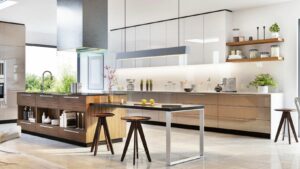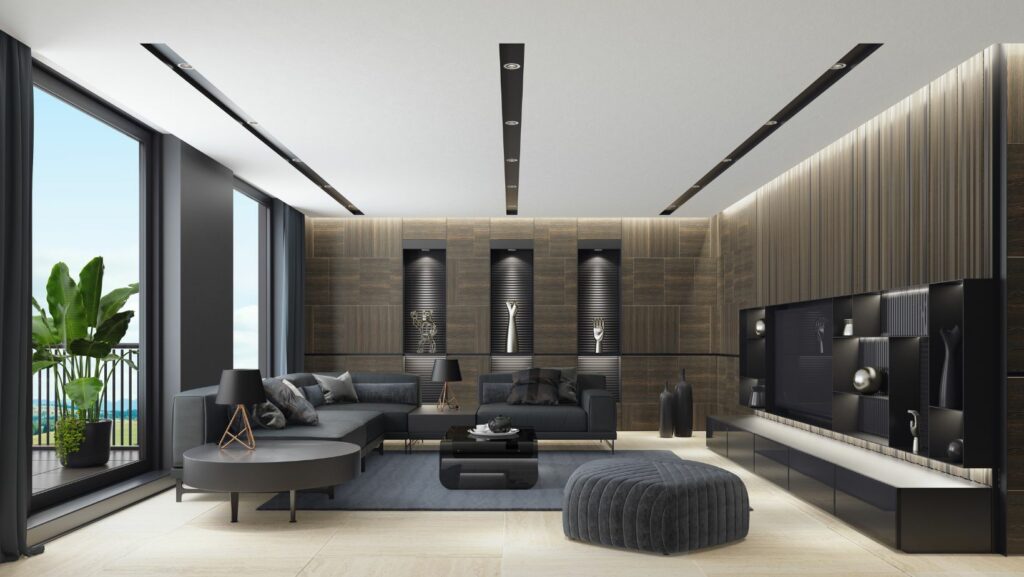Shape in Interior Design
Shapes play a crucial role in interior design by eliciting specific psychological impacts on individuals within a space. For example, sharp-edged shapes like rectangles and squares can convey a sense of stability, strength, and order. On the other hand, curvy shapes such as circles and ovals often evoke feelings of comfort, relaxation, and fluidity. By understanding these psychological associations, interior designers can manipulate shapes to influence the mood and emotional response of the occupants.
Achieving a balance between form and function is essential in utilizing shapes effectively in interior design. While shapes contribute to the aesthetic appeal of a space, they must also serve a functional purpose. For instance, selecting furniture with rounded edges in a high-traffic area not only enhances the visual flow but also minimizes the risk of accidents. Virtual staging apps can help explore different design options and make well-informed decisions. By experimenting with various layouts and styles, you can ensure that your space meets both aesthetic and functional needs before making any physical changes.
Geometric vs. Organic Shapes

Geometric shapes are angular and precise, offering a more structured and contemporary feel to interior spaces. They are commonly used in modern and minimalist designs to create a sense of order and sophistication. Rectangles, squares, and triangles fall under this category and are often associated with efficiency and stability.
On the other hand, organic shapes are free-flowing and asymmetrical, inspired by nature’s curves and forms. These shapes add a softer, more relaxed ambiance to interiors, promoting a sense of comfort and harmony. Circles, ovals, and irregular shapes belong to this group and are ideal for creating a welcoming and dynamic environment.
Dynamic Shapes for a Modern Look
Incorporating dynamic shapes in interior design can add a touch of creativity and flair to a modern space. Irregular, asymmetrical shapes break the monotony of straight lines, infusing energy and movement into the environment. By mixing geometric and organic shapes strategically, designers can achieve a captivating visual contrast that enhances the overall aesthetic appeal of the space.
Dynamic shapes are often used in accent pieces like furniture, lighting fixtures, and decor items to create focal points and visual interest. They help in creating a contemporary look that is visually stimulating and engaging, making the space feel vibrant and lively. Designers leverage dynamic shapes to inject personality and style into interiors while maintaining a cohesive and harmonious design scheme.
Analyzing Room Proportions

When deciding on shapes for a space, one should analyze room proportions to ensure a harmonious design. It’s essential to consider the size and layout of the room before selecting shapes. For instance, in a small room, opting for circular shapes can create a sense of openness and flow, while rectangular shapes can complement larger spaces by defining areas within them. By analyzing room proportions, one can accurately choose shapes that enhance the overall look and feel of the space.
Considering Lifestyle and Usage
Another crucial factor in choosing shapes for a space is considering the lifestyle and usage of the area. Understanding how the space will be used on a daily basis is key to selecting the right shapes. For example, in a family room where relaxation is paramount, choosing soft, curved shapes like a circular coffee table or an oval rug can promote a cozy atmosphere. On the other hand, in a workspace that requires focus and productivity, opting for angular shapes like a rectangular desk or square shelving units can instill a sense of order and efficiency. By aligning shapes with lifestyle and usage, one can create a space that not only looks good but also functions effectively.
Understanding the role of shapes in interior design is crucial for creating spaces that are both visually appealing and functional. Shapes play a significant part in establishing harmony, balance, and personal style within a room. By carefully selecting and incorporating shapes based on room proportions and lifestyle needs, designers can enhance the overall aesthetic while ensuring practicality. The synergy between furniture shapes, architectural elements, textiles, and color palettes is key to achieving a cohesive and inviting space. By leveraging the psychological impact of shapes and colors, designers can manipulate perceptions of depth, dimension, and ambiance to craft a harmonious environment. Embracing the interplay between shapes and colors allows for endless creative possibilities in interior design, offering a unique opportunity to transform living spaces into personalized sanctuaries.
